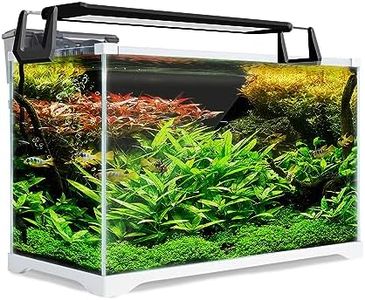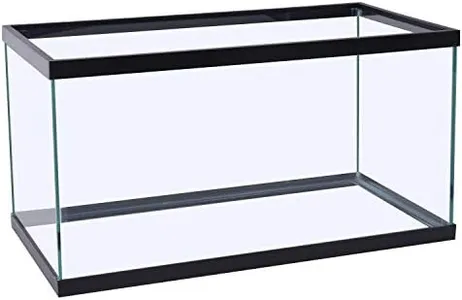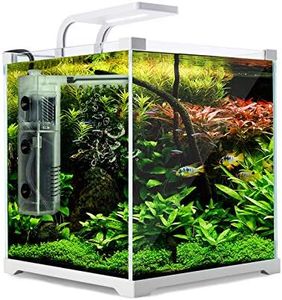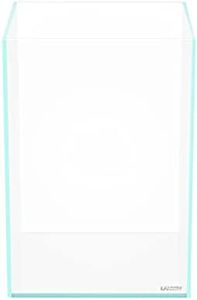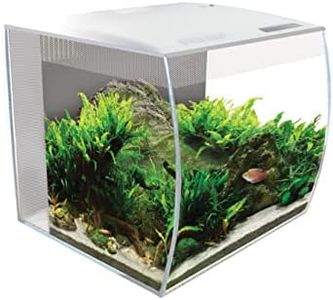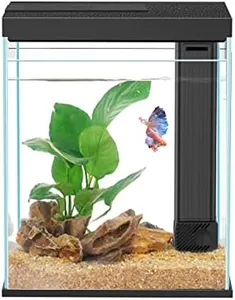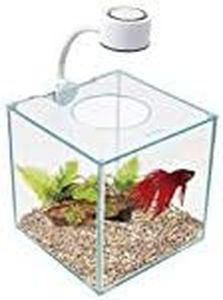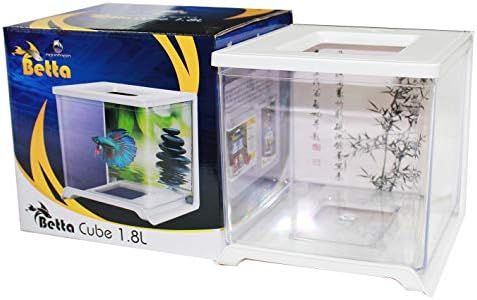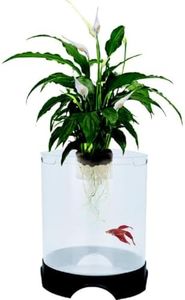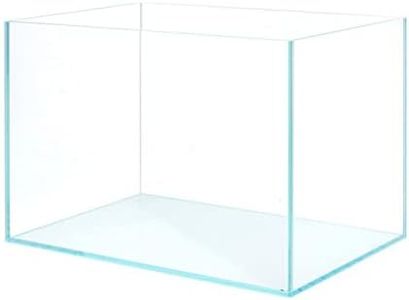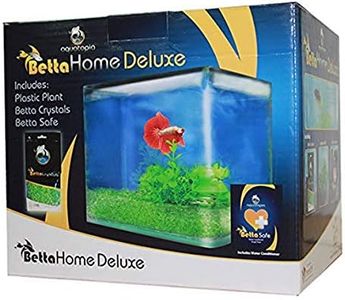We Use CookiesWe use cookies to enhance the security, performance,
functionality and for analytical and promotional activities. By continuing to browse this site you
are agreeing to our privacy policy
10 Best Betta Fish Tanks
From leading brands and best sellers available on the web.Buying Guide for the Best Betta Fish Tanks
Choosing the right betta fish tank is essential for the health, happiness, and longevity of your fish. Betta fish, also known as Siamese fighting fish, have specific care requirements that differ from other common aquarium fish. Selecting an appropriate tank involves understanding the needs of your fish and making sure their environment is safe, comfortable, and easy for you to maintain. Pay close attention to features that impact water quality, temperature stability, and overall ease of use.Tank SizeTank size refers to the overall capacity of the aquarium, typically measured in gallons or liters. This is important because betta fish need enough space to swim and explore, and a larger volume of water helps maintain better water quality by diluting waste. Tanks under 2 gallons are often too small and make maintenance harder, while tanks between 2 and 5 gallons are common for a single betta and are easier to manage. Larger tanks—5 gallons and above—offer the best environment for your fish and are easier to keep clean and stable. If you want your betta to thrive and you have space, aim for at least a 5-gallon tank. A bigger tank also gives you flexibility if you want to add plants or decorations.
FiltrationFiltration is the process of cleaning the water by removing waste, debris, and chemicals. It's crucial because clean water prevents disease and helps your betta fish stay healthy. However, betta fish aren't strong swimmers, so a gentle filter flow is important. When looking at filtration, there are basic systems like sponge filters that create minimal water movement, ideal for bettas, and more powerful filters suited for larger tanks or heavy bioloads. If your tank has a filter, ensure it's adjustable or designed specifically for bettas to prevent stress from strong currents. Choose a filtration system that matches your tank size and provides gentle, consistent water cleaning.
Heater and Temperature ControlA heater keeps the water at a stable, warm temperature—a must for betta fish who thrive between 76 and 82°F (24–28°C). Sudden temperature changes can stress or even harm your fish. Some small tanks don't include heaters, but these are best suited to consistently warm homes. For most people, using a reliable aquarium heater ensures your betta stays comfortable year-round. Pick a tank that has space for a heater, and look for models that let you monitor and adjust the temperature easily.
Lid or CoverA lid or cover is important because bettas are known to jump out of tanks, especially if startled. It also helps slow down water evaporation and keeps dust or debris out. Lids come in different materials like glass, plastic, or mesh. For safety, always choose a tank that comes with a secure, well-fitting lid. If you plan to add live plants or need easy access for feeding and maintenance, look for a lid that is easy to remove or has a feeding slot.
Shape and AccessibilityTank shape affects both the appearance and the well-being of your betta. Wide, horizontal tanks are better than tall, narrow ones because bettas like to swim near the surface, and shallow water makes it easier for them to reach air. Bowls, cubes, and rectangles are common. When choosing, opt for shapes that give your fish the most swimming room on one level and provide easy access for cleaning and maintenance. Consider where you'll place the tank and pick a shape that fits the space and allows you to care for your fish comfortably.
Water Quality MonitoringThis refers to the ability to easily check and maintain good water conditions, such as ammonia, nitrite, and pH levels. While not always part of the tank, some setups include built-in indicators or have features that make testing easier. Good water quality is vital for your betta's health, so pick a tank setup that allows you to easily access and test the water—either through removable lids, accessible water surfaces, or compartments for test kits.
